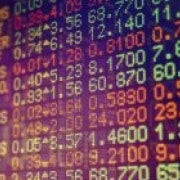Enviro markets update: STCs and energy efficiency
Small-scale Technology Certificates (STCs)

The release of the Renewable Energy Target Review Issues Paper coupled with a temporary cessation in the downward trajectory of STC submissions were not enough to halt the positive run in the spot STC market, which has now extended into its eighth week.
The potential for regulatory changes in any environmental market is sufficient to make many of those involved nervous. For this reason the Renewable Energy Target Review has been a prominent, though unsettling topic in the STC market in recent times.
There had been a great deal of uncertainty surrounding the level of detail that the Review would explore. In the end, the Issues Paper released a little over a fortnight ago by the Climate Change Authority revealed it would delve deep, asking questions about almost all fundamental aspects of the Small-scale Renewable Energy Scheme (SRES). Yet despite asking questions such as 'Is the uncapped nature of the SRES appropriate? Is the $40 Clear House price an appropriate cap for the STC market given the recent fall in the cost of some small-scale technologies, particularly solar PV?', which would ordinarily have spooked such a regulatory-dependent market, in the end, it failed to halt the steady positive price trend that has seen the spot market increase close to 20 per cent since the middle of July.

The spot price's resilience has been ascribed to the falling STC submission rate as well as to expectations of a more balanced market in 2013, both of which being the result of the steady reduction in subsidies at both state (feed-in-tariff) and federal (Solar Credits Multiplier) levels.
The question of whether or not the market would crack the psychologically important $30 level was dealt with promptly last week. Despite the considerable resistance that was expected – the result of sellers' desire for round figure pricing with a $3 in front of it – the spot has subsequently pushed through that level to reach the $31.00 mark in recent days.
The recent increases in the spot price also coincided with record trade activity during the month of August.
No update has yet been provided from the Clean Energy Regulator to its non-binding estimate of the 2013 Small-scale Technology Percentage and it appears that participants will need to hold out until at least the end of the month for any development on that front.
Energy Efficiency

The nation's energy efficiency markets have continued to enjoy a positive run, though for differing reasons. Meanwhile for those patient souls who have been awaiting development on the national front, recent weeks yielded some cause for optimism.
The New South Wales spot ESC market has continued its recovery, despite only sporadic trading taking place across the last month. The rate of ESC creation has remained fairly low, with many of the substantial number of new participants experiencing delays in the accreditation/product approval/ESC approval process. A stricter approval regime applies for new entrants, part of the scheme regulator's approach to ensure the scheme's integrity. The significant increase in workload appears likely to be stretching the available resources at IPART, a familiar issue in recent years across the various environmental markets.
Having fallen to a low of $24.50 in early July, the spot market has now recovered to reach $27.10 earlier this week.
The number of ESCs created in 2012 stands at 637K, with a further 263K certificates from previous vintages that are able to be surrendered. With IPART estimating in the last quarterly newsletter that the target for 2012 will be approximately 2 million, there is still considerable work to be done to ensure there are enough ESCs available for the 2012 target.

In Victoria, the VEEC market has also experienced price rises, although not to the extent of its northern neighbour. Having spent some time around the $21.00 mark in July, a gradual upward trend has seen the spot reach $21.50 in recent weeks. Unlike the ESC market, the VEEC market is awash with certificates due primarily to the overwhelming success of Stand-by Controllers and the large number of certificates that have been generated from that activity. Price increases in this case appear to be the result of expectations of future supply.
The two state-based energy efficiency schemes may still become obsolete if it is determined that a national Energy Efficiency Initiative (NESI) is in the national interest, and if the political will exists to champion the policy exists.
The makeup of any possible scheme as outlined in the NESI Progress Report, which was released less than a fortnight ago, would be familiar with those who already operate within the Victorian and New South Welsh schemes. Companies would undertake approved energy efficiency activities and create certificates which they would then on sell to liable entities (generally electricity and gas retailers) for surrender.
It would be some time before any such scheme could be implemented with the regulatory impact analysis due by the end of this year merely the next step.
Marco Stella is a Senior Broker, Environmental Markets and editor of The Green Room at Nextgen, a wholesale energy and environmental brokerage firm. www.nges.com.au The content above is sourced from excerpts taken from The Green Room.















